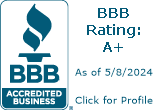Traditional vs Roth Solo 401k contributions – which is better for you? The big difference is occurs when you begin withdrawing funds from your Roth Solo 401k. You will not have to pay taxes on earnings, interest, dividends, and capital gain. All of it is tax-free at that point. On the other hand, because no tax was paid on Traditional Solo 401k contributions, taxes are owed at the time of withdrawal. The owed taxes apply to the original contribution, earnings, interest, dividends, and capital gain.
Fortunately, you don’t have to choose one or the other when you open your Solo 401k account with Nabers Group.
Traditional vs Roth Solo 401k Contributions
Choosing between a Traditional and Roth 401k mostly involves what income tax bracket you are in today and what income bracket you expect to be in when you retire. An advantage of contributing to a Traditional Solo 401k today is that this reduces your taxable income during the years you are working. If you are in a higher tax bracket today than you expect to be when you retire, deferring income today has the possibility of lowering your tax bracket during your working years. Even if your traditional contribution doesn’t lower your tax bracket, you will still have less income for the year, which results in a lower tax bill for the year.
Truth be told, not paying those taxes today could turn out to be a disadvantage of the Traditional Solo 401k. When your Solo 401k account accumulates substantial wealth, you may end up in a higher tax bracket during your retirement years than during your working years. This could mean reducing taxes now but result in paying more taxes later.
Traditional 401k Funds and Inheritance
You might think that you could simply pass that wealth on to your heirs without paying those taxes. Unfortunately, you cannot keep retirement funds in your account indefinitely. Generally, you have to start taking required minimum distributions (RMD) from your account beginning April 1 following the calendar year in which you reach age 72. Taxes are based on your income level when you withdraw the money. Some Solo 401k owners expect to have a higher level of income when they make withdrawals compared to when they made contributions. This means they may pay more in taxes.
Another very important consideration is that you will be paying future taxes on earnings, interest, dividends, and capital gain. Although you pay taxes before contributing to a Solo Roth 401k, you DO NOT pay taxes when you make withdraws, not even on earnings, interest, dividends, and capital gain.
The future tax rate is another important tax consideration. If you believe your tax rate will be lower during your retirement years, the Traditional Solo 401k can be more appealing. This involves the tax rate percentage, which is a separate consideration from the amount of taxable income that you’ll be withdrawing. If you believe the tax rate is lower today than it will be during your retirement years, it makes more sense to pay the taxes today on a Solo Roth 401k so you can withdraw the funds tax-free during retirement.
Advantages and Disadvantages of Roth 401k Contributions
The Solo Roth 401k came about in 2006 and has been gaining popularity ever since. The biggest advantage is that all withdrawals are tax-free as long as you follow a few simple rules. The basic withdrawal rules are that you must be at least 59½. Additionally, you need to have held the plan a minimum of five years to qualify for tax-free withdrawals. You can also take tax-free withdrawals if you become disabled. Or a beneficiary can make withdrawals in the event of your death (this can be a great estate-planning tool).
If you own a 5% or larger share of the employing company, the distribution must begin at age 72 regardless of employment status. Always follow the rules regarding RMD because you will face harsh penalties if you do not withdraw money from your account at the set time. But keep in mind that RMDs from a Solo Roth 401k are not taxed.
The disadvantage is that once you take a distribution from your Roth Solo 401k, that money will no longer continue growing tax-free. You may want to roll over your Solo Roth 401k to a Roth IRA once you’re no longer employed, effectively getting around the RMD. But the five-year holding period begins again with the start date of the Roth IRA.
Also, consider that Solo Roth 401k withdrawals won’t increase the taxes owed on your Social Security benefit.
Other Benefits of Tax-Free Roth Funds
Another advantage of a Solo Roth 401k is that no income ceiling applies as it does with a Roth IRA. However, contribution limits are the same as a Traditional Solo 401k.
One possible disadvantage is that employer contributions only come from pre-tax dollars. They cannot be Roth after-tax contributions. Because you are your own employer, this helps with your business taxes because it is a tax deduction. However, as the employee receiving the tax-free contribution from the employer, you are going to owe taxes when you take distributions on the employer contribution and any earnings associated with the match.
Another important possible disadvantage is that you can’t change your mind after Solo Roth 401k contributions are made. Rolling them over to your Traditional Solo 401k to take the tax deduction later is not available. Once it’s done, it’s done. But you might consider contributing to both a Traditional Solo 401k and a Solo Roth 401k, which we’ll cover more in another blog.
Personal Considerations When Deciding Between the Two
Traditional vs Roth Solo 401k contributions is a personal decision. Deciding factors include financial goals and expectations for future tax rates. Make an educated decision based on the trajectory of your career and future earnings. You can also project what you expect tax rates to be when you begin withdrawing funds from your retirement account.
Our Roth vs Traditional Contribution Calculator helps you figure this all out.
Examples of Roth vs Pretax Considerations
Here are guidelines that typically make the Roth 401k a good decision:
- You are young and in a lower tax bracket than you expect to be at the end of your career.
- You anticipate tax rates will be higher in future years than they are today. This can apply even if you don’t anticipate major increases in your annual earnings.
- If you have many years in front of you to grow your retirement account with tax-free earnings.
- Perhaps you don’t want your retirement withdrawals to impact taxes on your Social Security benefits.
Here are guidelines that typically make the Traditional 401k a good decision:
- You are in a high tax bracket today and need the tax-deferral to reduce today’s taxes.
- When you are in a high tax bracket today but expect to be in lower tax bracket during retirement.
- You have both a Solo 401k and a 401k from another employer who does not match contributions to their Roth 401k.
- Even if you already have a Traditional Solo 401k, you may want to consider opening a Solo Roth account. This gains you the capability to decide between withdrawing tax-free or tax-deferred funds.
Nabers Group plans automatically includes both Roth and Traditional 401k. Both Traditional and Roth Solo 401k accounts allow for the highest possible contributions. However, you must plan for them and take action on your plan!





